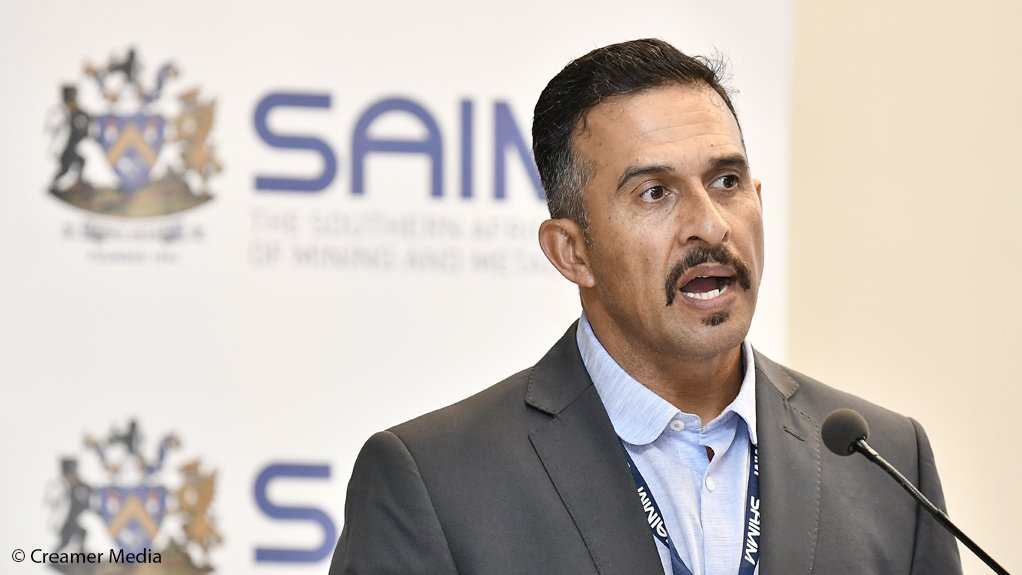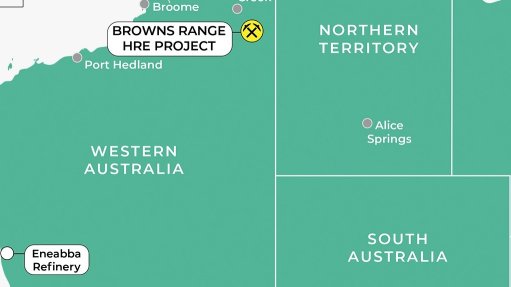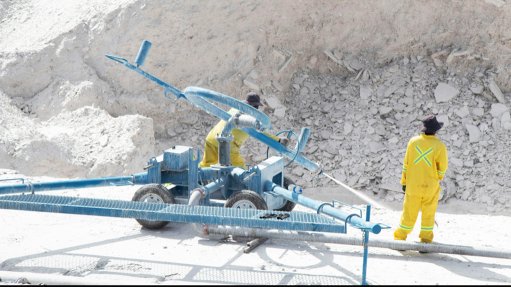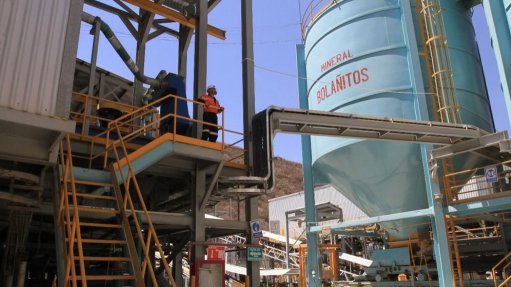Local manufacturers to benefit from Mining Charter 3's implementation


MEMSA chairperson Freddy Mugeri discusses the implications of Mining Charter 3 for equipment manufacturers. Video and editing: Nicholas Boyd.
DTI director Yusuf Timol
Photo by Creamer Media's Dylan Slater
JOHANNESBURG (miningweekly.com) – Mining Charter 3 and its Implementation Guidelines have created an environment where it is possible for local manufacturers to leverage procurement capacity to drive transformation, Department of Mineral Resources representative Xolile Mbonambi said at a breakfast held at the Industrial Development Corporation's offices on Thursday.
The ‘Local is lekker: Creating capacity and capability for mining companies to buy local’ breakfast was hosted by the Southern African Institute of Mining and Metallurgy in collaboration with the South African Mineral Processing Equipment Cluster, the Mining Equipment Manufacturers of South Africa (Memsa) and the Mandela Mining Precinct.
Mbonambi noted that the targets set out in the Charter create something of a platform for local manufacturers to increase capacity and output, and potentially leverage this growth to meet job creation and economic transformation objectives.
He suggested that the Mining Precinct research and development work into the development of the next-generation of mining equipment would assist in a “just transformation to mechanisation.”
Department of Trade and Industry (DTI) director Yusuf Timol explained that one of the core reasons for hosting the breakfast was to delve into the the implications of Mining Charter 3, specifically in terms of meeting the supply chain requirements.
Timol noted that the charter, gazetted in September last year, was “quite stringent” in terms of its targets of 70% of procurement spend on South African manufactured goods with 60% local content.
He commented that a 2017 DTI study had revealed that there was no common standard of identifying goods, which meant that it was "difficult to track, nationally, what is procured at an item level, what percentage of that is locally manufactured, what can be prioritised for import replacement and so on”.
He noted that in line with Article 2.2.3.1 in the charter, which states that a mining company “must procure goods in line with a standardised product identification coding system developed by the DTI”, the department is looking into assisting in the development and adoption of such a system and is collaborating with nonprofit standards organisation GS1.
GS1 standards provide a global integrated framework to manage supply chain information, using unique identification codes to enable cross-border compatibility of supply chain solutions.
The idea is that all local equipment and components manufacturers obtain a unique identifiable code for each of their unique products from GS1. These codes hold varying amounts of data, such as batch number, place of origin and the amount of local content. The GS1 cloud-based database would then enable mining companies worldwide to source goods using the barcode system.
While Timol could not specifically state when such a system would be ready, he did reference a 2018 study for the South African cotton industry, which indicated that implementing the GS1 system in that sector would take five years.
He stressed that the implementation of such a system was highly important given the fact that growth and adaptability of the local mining equipment manufacturing sector is dependent on the visibility of its supply chain, including traceability of products, with real-time flow of information – both the upstream and downstream.
Memsa chairperson Freddy Mugeri added that the charter enables an environment that creates opportunities for growth for local suppliers and small enterprises.
He noted that, in terms of capacity, local manufacturers would be able to double output for their existing products in less than six months but that more capital-intensive capacity increases (e.g new products, new machinery to significantly increase throughput) would only be in one place in the medium term.
He added that foreign original-equipment manufacturers (OEMs) were localising some of their products and inputs, and that they have been encouraged to develop small, medium-sized and microenterprises in partnership with rightholders.
This means that the market will continue to be supplied by local and foreign OEMs, but that there will be a significant increase in local content in the ramp-up period.
Mugeri commented that financial and capacity constraints at the South African Bureau of Standards (SABS) is cause for concern in terms of verification of products, despite the 24-month grace period stipulated in the charter. He believes the verification issues are too large for the SABS in its current state to handle alone, and that it requires approved vendors and verifiers to assist, similar to the verification and consulting services industry that exists for black economic empowerment certification.
He also stressed that the manufacturing sector and mining companies should adopt the GS1 system.
Mugeri added that local suppliers should look into innovative export finance solutions for the African market. “South African suppliers expect money upfront, while our competitors ask for payment 30, 90 or 120 days later . . . who do you think gets the deal?”
He also noted that the government had to tread carefully when classifying components from OEMs based in neighbouring states, as there might be pushback from those OEMs and, moreover, it could impact the local content calculation.
Article Enquiry
Email Article
Save Article
Feedback
To advertise email advertising@creamermedia.co.za or click here
Announcements
What's On
Subscribe to improve your user experience...
Option 1 (equivalent of R125 a month):
Receive a weekly copy of Creamer Media's Engineering News & Mining Weekly magazine
(print copy for those in South Africa and e-magazine for those outside of South Africa)
Receive daily email newsletters
Access to full search results
Access archive of magazine back copies
Access to Projects in Progress
Access to ONE Research Report of your choice in PDF format
Option 2 (equivalent of R375 a month):
All benefits from Option 1
PLUS
Access to Creamer Media's Research Channel Africa for ALL Research Reports, in PDF format, on various industrial and mining sectors
including Electricity; Water; Energy Transition; Hydrogen; Roads, Rail and Ports; Coal; Gold; Platinum; Battery Metals; etc.
Already a subscriber?
Forgotten your password?
Receive weekly copy of Creamer Media's Engineering News & Mining Weekly magazine (print copy for those in South Africa and e-magazine for those outside of South Africa)
➕
Recieve daily email newsletters
➕
Access to full search results
➕
Access archive of magazine back copies
➕
Access to Projects in Progress
➕
Access to ONE Research Report of your choice in PDF format
RESEARCH CHANNEL AFRICA
R4500 (equivalent of R375 a month)
SUBSCRIBEAll benefits from Option 1
➕
Access to Creamer Media's Research Channel Africa for ALL Research Reports on various industrial and mining sectors, in PDF format, including on:
Electricity
➕
Water
➕
Energy Transition
➕
Hydrogen
➕
Roads, Rail and Ports
➕
Coal
➕
Gold
➕
Platinum
➕
Battery Metals
➕
etc.
Receive all benefits from Option 1 or Option 2 delivered to numerous people at your company
➕
Multiple User names and Passwords for simultaneous log-ins
➕
Intranet integration access to all in your organisation




















